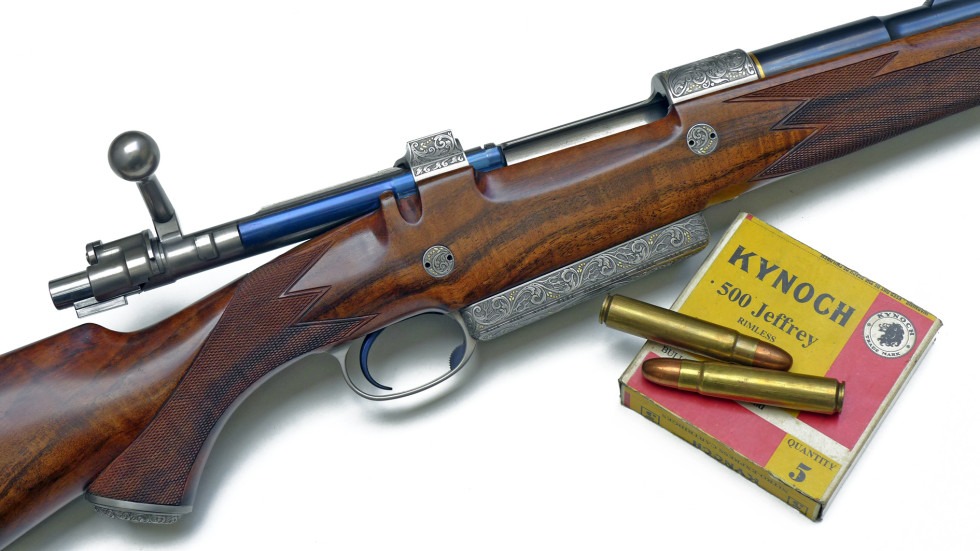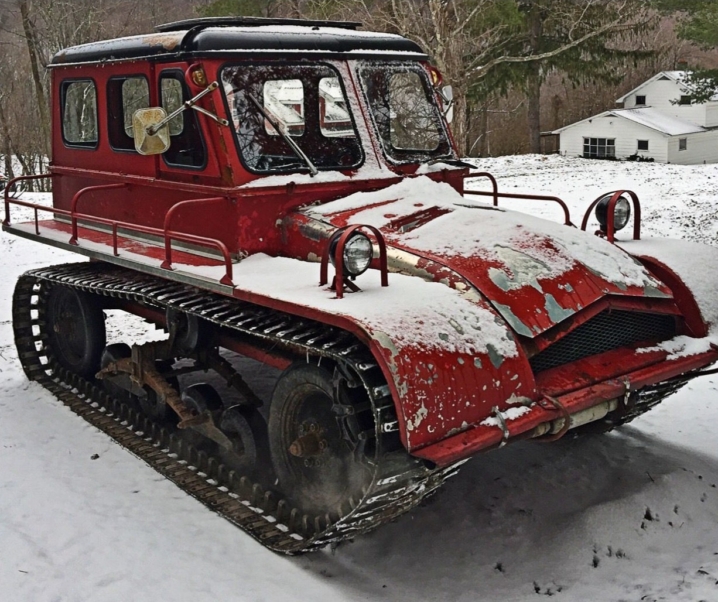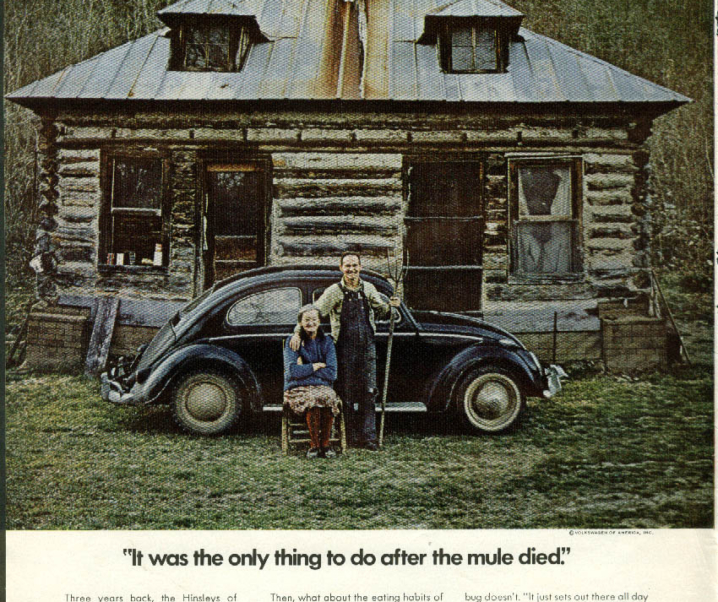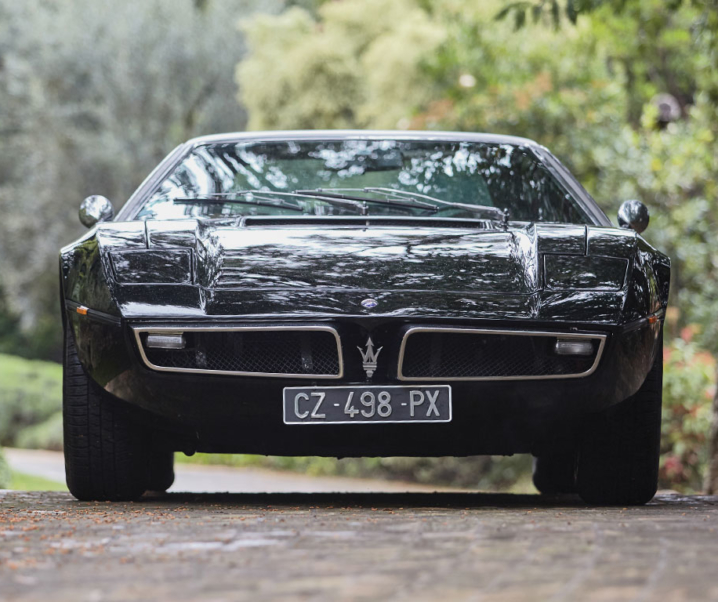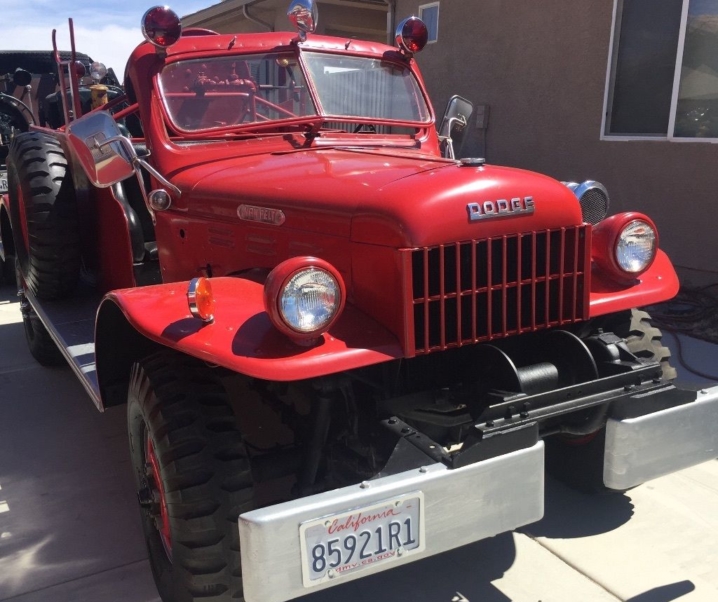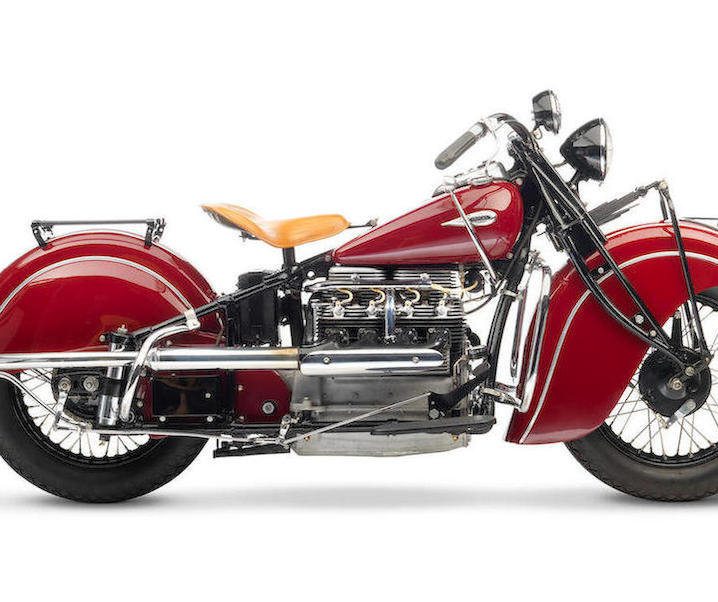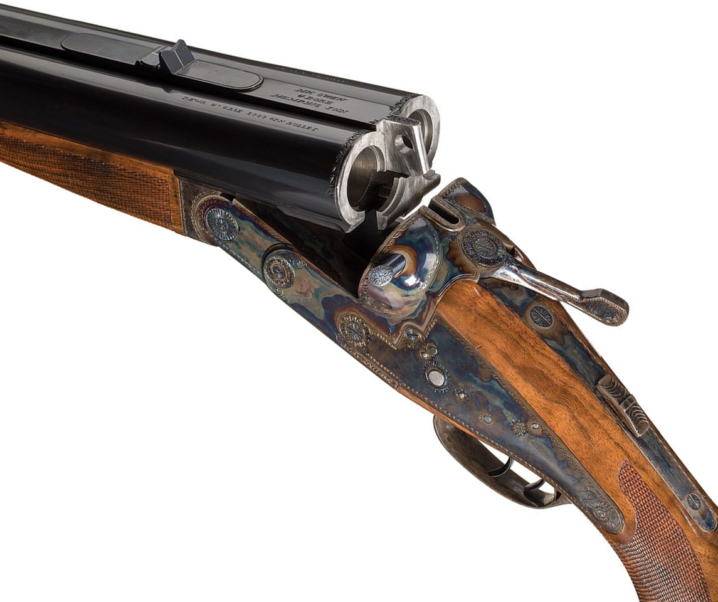Introduction: A .500 Nitro Express for Bolt Action Magazine Rifles
The cartridge that we know today as the .500 Jeffery almost certainly began life back in the mid 1920’s in the gunshop of German gunsmith August Schuler and was originally called the .500 Schuler. August Schuler’s was a highly respected name in German sporting rifle circles and he was also the creator of the 6.5×68 Schuler which despite being released in 1938-1939 was so good it survived the war and remains to this day a quite popular long range cartridge in Europe, nowadays mainly loaded by RWS.
The .500 Schuler was not known by the metric designation 12.7×70 Schuler until it was loaded by German ammunition maker RWS in the 1940’s.
The .500 Schuler seems to have been such a good idea that the British gunmaker W.J. Jeffery adopted the basic case, redesigned it, and called it the “.500 Jeffery”. Although there is some debate as to whether Schuler or Jeffery were first to design their cartridge there are a couple of indicators that point towards Schuler. Firstly the cartridge was designed to fit a standard Mauser M1898 action, and Schuler made his rifles based on that action, Jeffery used magnum Mauser actions for his .500 Jeffery. Secondly, it would appear that before World War II British ammunition maker Kynoch imported un-necked cases from Europe, most likely from Gecado, and then at their British factory inserted a charge of Cordite (which was not used in Europe) under an over powder wad, formed the case neck, and inserted and crimped a British made bullet. If the cartridge was already being loaded in Europe so that Kynoch could import partially finished cases then that would support the notion that August Schuler was the original designer.
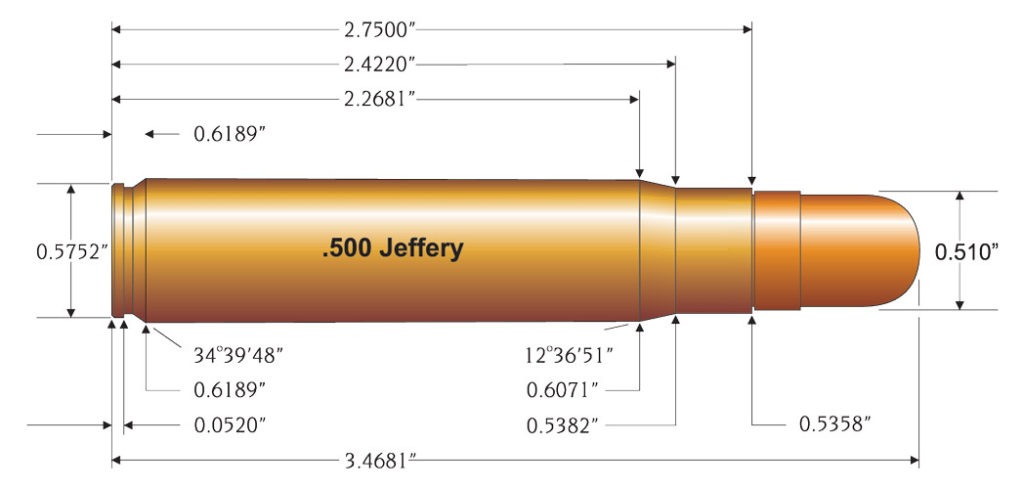
August Schuler’s objective in designing the .500 Schuler was to create a cartridge that would fit into a standard Mauser M1898 action, and that would deliver at least as much dangerous creature stopping power as the British .500 Nitro Express which was regarded as “A real killer on practically anything”. Schuler chose to use the same .510″ bullet diameter as the .500 Nitro Express and opted for the largest rim size that a standard Mauser ’98 bolt could accommodate, .5752″ (14.6mm). In order to easily obtain .500 Nitro Express power a larger diameter case was needed to provide the powder capacity necessary so the case head diameter was set at .6189″ (15.7mm) making this a rebated rim cartridge, and the case neck was kept as short as possible to maximize case capacity.
The cartridge case length was 70mm (2.75″) and cartridge overall length set at 3.4681″ (88 mm) so it would fit the standard Mauser ’98 action without need for cutting out metal to lengthen the magazine as was required for the .375 Holland & Holland and the .404 Jeffery. The fact that the .500 Schuler did not require a Magnum Mauser ’98 action also meant that rifles could be made for it far more inexpensively than for such calibers as the .416 Rigby or the .505 Gibbs: in fact a .500 Schuler could be built on a military surplus Mauser ’98 action or something similar such as the Enfield M1917.
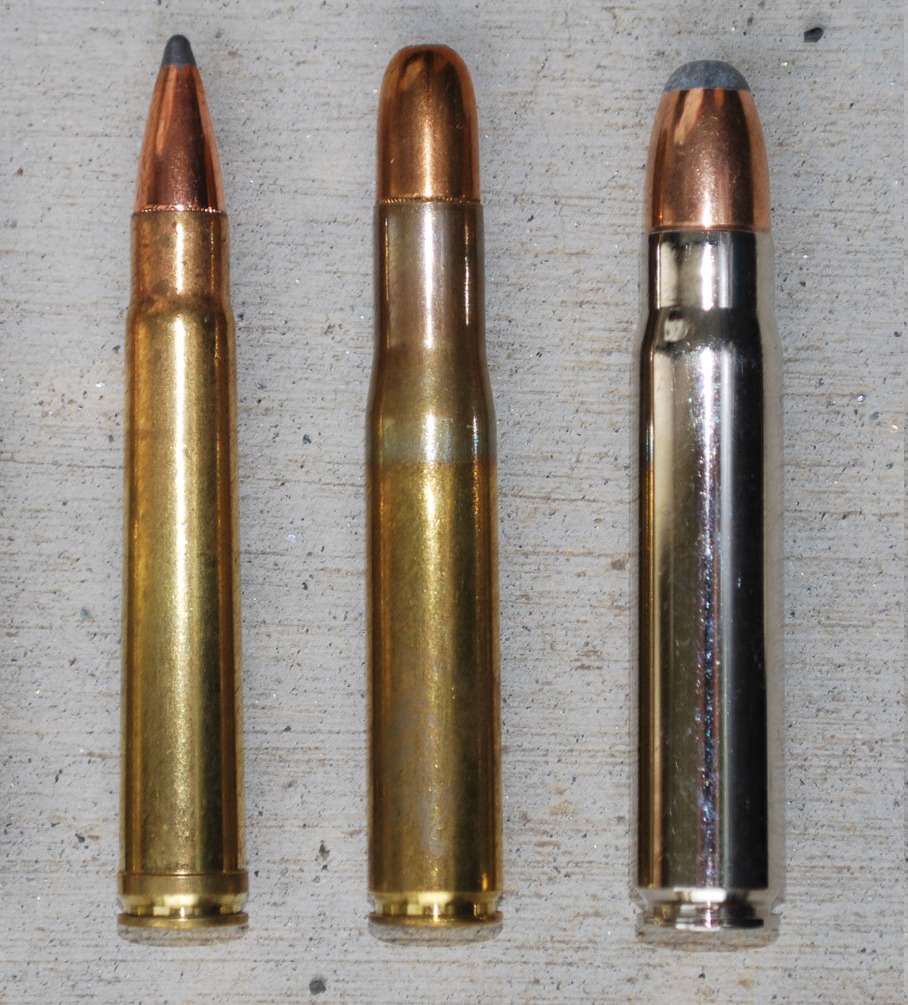
August Schuler’s rifles used a vertical magazine with a spring clip arrangement to retain the cartridge as it was picked up by the bolt and fed into the rifle’s chamber. This system aligned the cartridge with the chamber and did not need a significantly tapered shoulder angle or case taper in order to feed reliably. Westley Richards used a similar arrangement for their .425 Westley Richards rifles: this being necessitated because of the rebated rim of the .425 WR just as the .500 Schuler also had a rebated rim. Jeffery on the other hand did not use standard Mauser ’98 actions but instead used Magnum Mauser actions and their standard staggered column magazine which necessitated using a more gentle shoulder angle to better facilitate reliable feeding. (Note: for more on this see the page on this cartridge on cartridgecollector.net This page has the full text and diagrams of the Kynamco/Kynoch submission to the CIP on cartridge dimensions that has led to the .500 Jeffery and .500 Schuler being recognized as different cartridges, each with its own CIP listing).
The vertical magazine used on the .500 Schuler rifles held two cartridges whereas the staggered column of the Magnum Mauser action used by Jeffery for his .500 Jeffery had a three round capacity with the ability to load an additional cartridge in the chamber giving a 3+1 capacity.

The upshot of this for those building a modern day .500 Jeffery is that the action has to be customized to obtain the fail-safe 100% reliable feeding, extraction and ejection essential for a dangerous game rifle. One key to getting reliable feeding is a custom magazine follower combined with a good new magazine spring. The gunsmith building a .500 Jeffery really needs to understand what is needed to obtain completely reliable function and be experienced in building rifles of this type. A .500 Jeffery is a rifle that you must be able to depend on: it is a beautiful steel and walnut life insurance policy.

(Note: You will find Ryan Breeding’s website if you click here).
The fact that a .500 Jeffery rifle could be built on a standard action had its positive side but also a negative. Some gunsmiths built very light sporting rifles, typically weighing around 8½lb, and sold these to unsuspecting customers. Such a rifle would seem to be a fabulous idea in the gun-shop and the buyer’s joy in his new purchase would last right up until the first time he fired it. Recoil of such lightweight rifles was described as “hideous” and indeed the sheer smack of the trigger guard and/or bolt handle hitting fingers under recoil can be a painful experience.
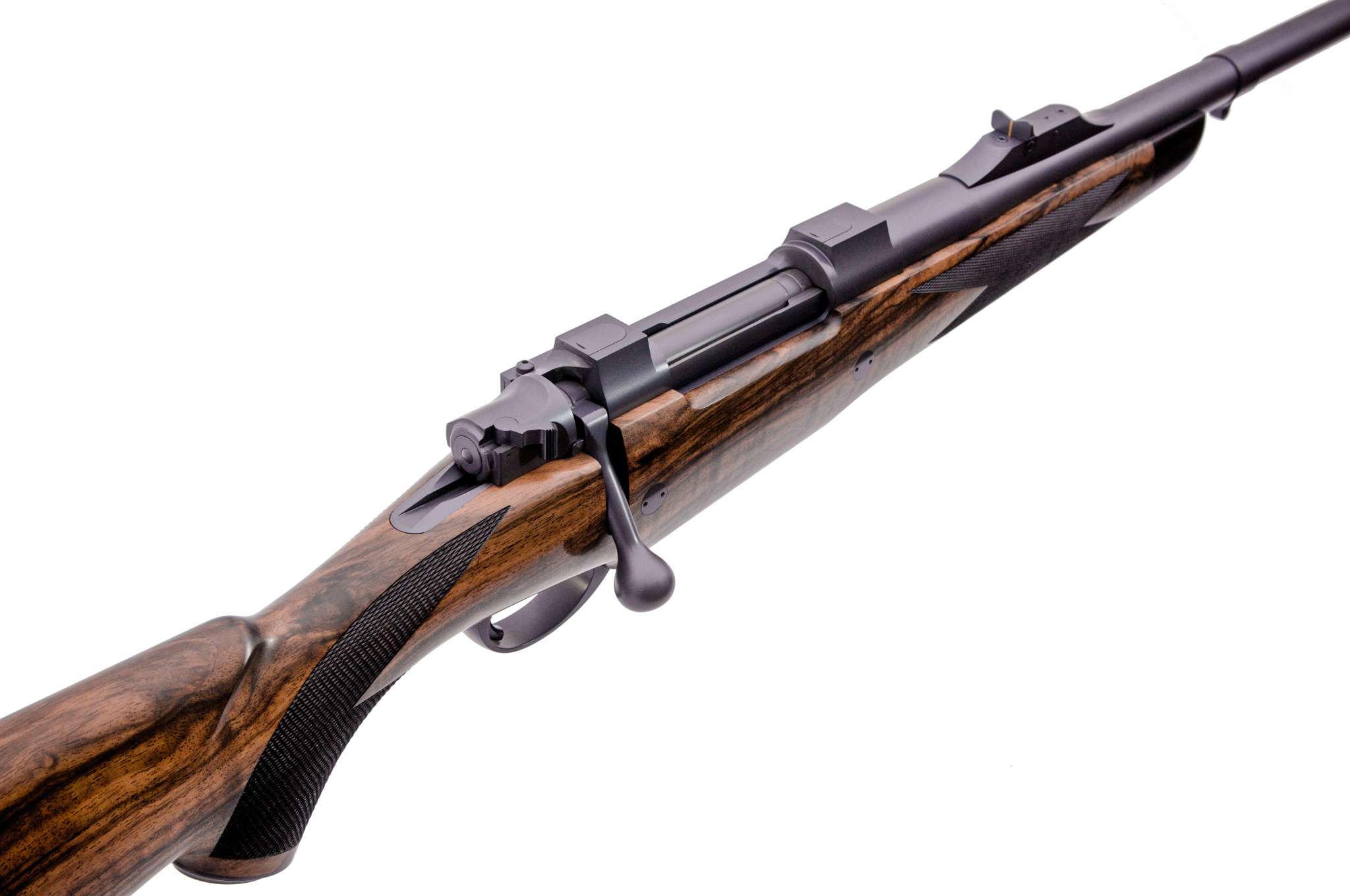
A .500 Jeffery or .500 Schuler delivers much the same ballistics as the .500 Nitro Express and so, with due deference to Sir Isaac Newton’s third law of motion that “every action produces an equal and opposite reaction”, a .500 Jeffery or .500 Schuler rifle needs to weigh about the same as a comparable .500 Nitro Express double rifle, about 10½lb: then its recoil driven finger smacking velocity is reduced to tolerable levels and you are much less likely to finish up with a hairline fracture of your trigger finger.

.500 Jeffery Ballistics
The .500 Jeffery and .500 Schuler were equivalent in ballistic performance and not only equaled the performance of the .500 Nitro Express, but they proved capable of exceeding it. The .500 Jeffery was listed as propelling a 535 grain bullet at no less than 2,400fps from a 28″ barrel delivering a whopping 6,800 ft/lb of energy. By comparison the .500 Nitro Express propelled a 570 grain bullet at 2,150fps from a 28″ barrel delivering 5,852ft/lb of energy or 2,170fps from a 30″ barrel delivering 5,961ft/lb. Energy figures are always skewed in favor of velocity however and if we compare the momentum of the .500 Jeffery and .500 Nitro Express we find the 535 grain bullet load from the .500 Jeffery generating 183.4ft/lb of momentum and the .500 Nitro Express at 2,170fps delivering 176.7ft/lb: so we doubt that a pachyderm would notice any difference between the two.
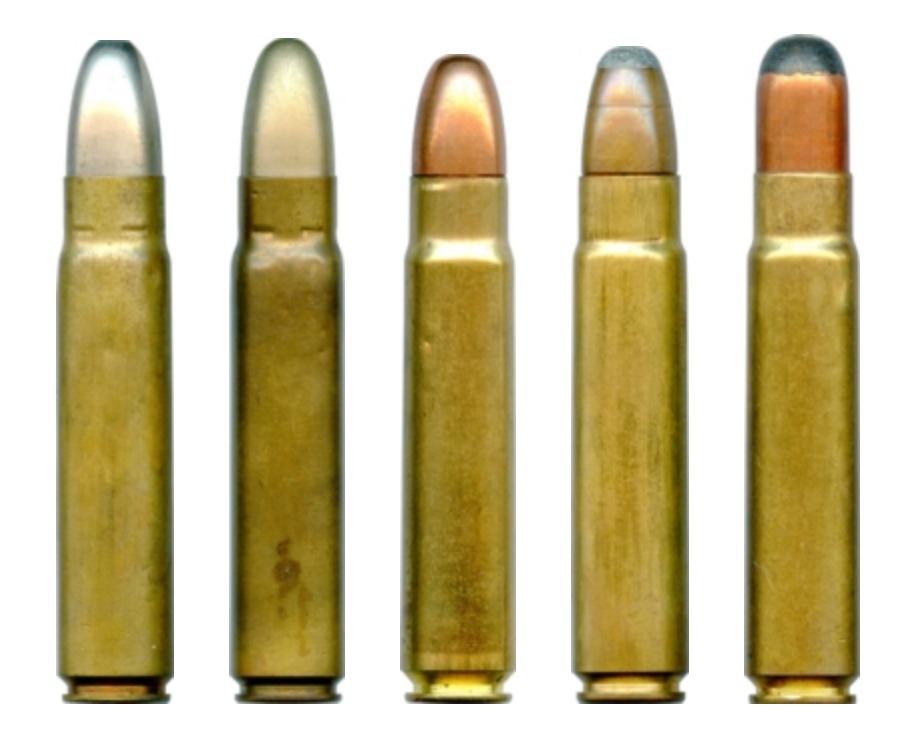
Because the .500 Jeffery and Schuler use the same .510″ diameter bullets they can also use the 570 grain projectiles and send them out of the muzzle at the same sort of velocities as the .500 Nitro Express, which means around 2,150fps-2,200fps. For the reloader there is absolutely no point in trying to maximize the velocity. For best bullet performance with these large bore moderate velocity cartridges around 2,150fps is the ideal delivering the power in the best way and also ensuring that pressures are kept moderated so that fired cartridges extract easily: if you are after anything from buffalo on up to elephant one must expect to have to fire more than one shot. One shot might do it, but often it doesn’t and the ability to reload and send more copper jacketed sleeping pills to the right place is all important.
The African Hunting Gazette publishes good information on the .500 Jeffery listing some of the factory loadings that have been offered for this cartridge.
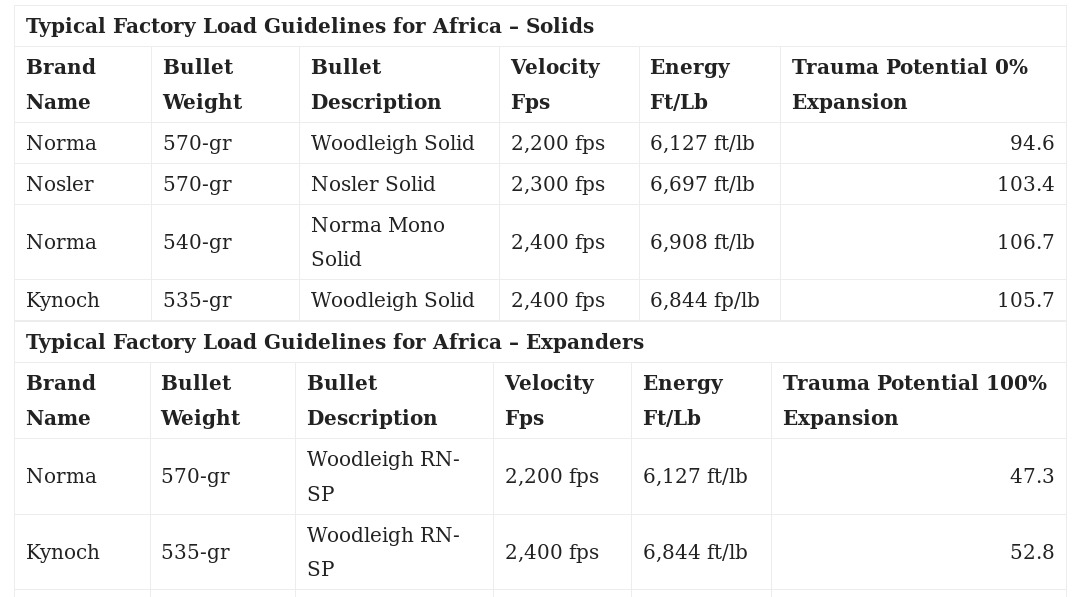
Not listed on this chart are loadings using the Woodleigh “Hydro” hydrostatically stabilized monolithic bullets. For situations where the deepest penetration and maximum wound channel are required the Woodleigh Hydros are among the best available. They are however not recommended for use in a herd situation where a bullet may fully penetrate the target animal and go on to wound another. The Woodleigh Hydro bullets are made in .510″ diameter and 570 grain weight and the loading data in the Woodleigh Bullets Loading Manual lists them as having muzzle velocities in the 2,110fps to 2,180fps range from 23″ and 24″ barrels.
Rifles for the .500 Jeffery
If you are planning on a .500 Jeffery rifle there are some serious considerations. Not only is the ammunition expensive but getting a rifle that will deliver 100% reliable functioning is also likely to be expensive. Common failings of less expensive custom rifles made on military surplus actions are failures to feed and failures to eject properly, forcing the shooter to tip the rifle to the side to get gravity to help the case drop clear of the action. A .500 Jeffery is not an easy cartridge to build a rifle for, and so you either need to go to a custom gunsmith with an established reputation for building rifles in this caliber or purchase a rifle that has an excellent reputation. In both cases you need to test that new .500 Jeffery rifle thoroughly so that if it does have a weakness you find it and fix it before venturing out on a dangerous game adventure.

Before buying a .500 Jeffery it is worth doing an honest evaluation of your personal ability to deal with the muzzle blast and recoil. If you are completely comfortable shooting twenty rounds through a .458 Winchester Magnum and you hit the target with boringly predictable success then you are probably ready for a .500 Jeffery. But consider that a current production Winchester Model 70 Safari Express in .458 Winchester Magnum or .416 Remington Magnum will provide absolutely reliable feeding and ejection, will have a perfect trigger, will be much more comfortable to shoot, and will be much less expensive both to buy and to shoot: so you’ll shoot it more. So first evaluate your options.
For an affordable rifle with an excellent reputation for 100% reliability the Sako rifles from Finland are very hard to beat. Sako make two models in .500 Jeffery and the first of these is their Model 85 Safari.

The Sako Model 85 Safari has a forged bolt with three locking lugs giving a 60° bolt lift. The magazine is fixed and the .500 Jeffery is built on the “XL” large action.
The second .500 Jeffery rifle Sako make is their Model 85 Brown Bear. This rifle also has a fixed magazine but instead of a quarter rib rear sight is fitted with an open “V” on a ramp and has a blade front sight.

The Model 85 Brown Bear has a laminated stock for optimum durability in adverse weather conditions.
My personal experience with the Sako Model 85 is limited to one in .416 Rigby and it was such an excellent rifle that it was hard to give it back to its owner. Function was perfect and the rifle seemed to tame the .416 Rigby’s recoil rather nicely. It was ready for action straight out of its maker’s box.
Another affordable option is the CZ Magnum Express rifle which is made in a variety of safari calibers including the 500 Jeffery and 505 Gibbs.

The CZ Magnum Express features their single set trigger which is actuated by pushing the trigger forwards to set it to a no creep light release. These rifles are nicely made, comfortable to use, and respond well to some gunsmithing attention to polish and refine the action, especially to ensure the best feeding. For open sights use I think having an optic fiber front sight fitted is a good idea, it certainly helps those of us with aging eyes.

One of the surprising rifles that is offered in .500 Jeffery is the Blaser R8. Blaser offer their Selous, Kilombero and Professional Hunter straight pull rifles in .500 Jeffery. The Blaser R8 rifles are well made and have established an excellent reputation for themselves in Europe. The straight pull Blaser R8 provides perfect function “out of the box” and the straight pull action enables significantly quicker follow up shots than is possible with a bolt action. These rifles are also fitted with a recoil reducing device in the butt stock which is welcome on a rifle chambered for the .500 Jeffery. The Professional Hunter is the least expensive model and features a synthetic stock while the Kilombero and Selous have walnut stocks. The Selous is the most luxurious and as can be seen by the picture below it is a rifle to drool over.
If thinking of a Blaser R8 you should discuss this with a professional hunter or two and/or people with experience with these rifles on dangerous game hunts. The straight pull action is fast and easy to use as long as its kept clean and lightly lubricated. These rifles use a cock/de-cock style of safety system rather than an actual safety catch. This means that on close approach to game you will either have your rifle “cocked and unlocked” or uncocked.

Other than a limited selection of production rifles the other option for the person with a .500 Jeffery size hole burning its way into their wallet will be one of the custom rifle-makers in the US, Britain or Europe. There are quite a few options. We’ve looked at an example from Ryan Breeding earlier in this post but Jeffery are still in operation and making .500 Jeffery rifles.
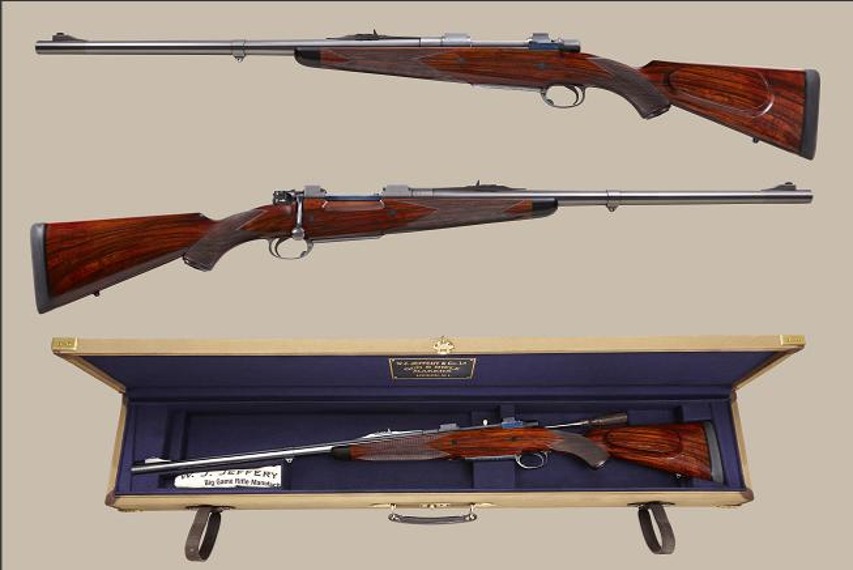
In France Dorleac & Dorleac make their “Rhino” bolt action magazine rifle on a Gottfried Prechtl magnum Mauser action and fitted with a German Heym hammer forged barrel. These are a unique looking and gorgeous piece of French engineering and well worth a look if your search is in that upper price bracket.

The British makers such as Rigby, Holland & Holland, Anderson Wheeler or Purdey are also quite likely to be willing to take your commission to build you the .500 Jeffery rifle of your dreams and something from them will be likely to last so long your great great great grandchildren will get to enjoy it.
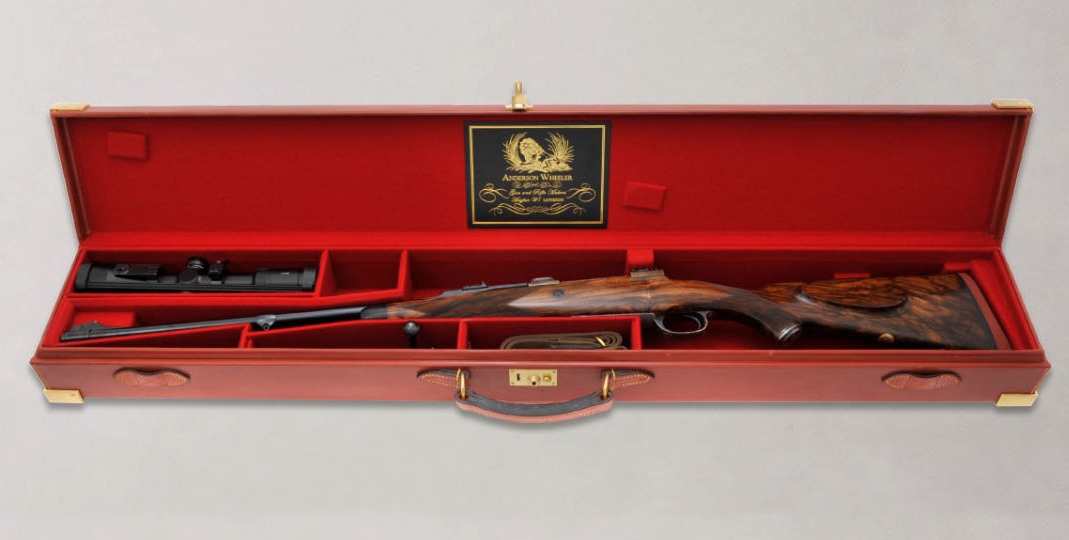
Last but not least there are frequently .500 Jeffery rifles turning up for sale on Internet websites such as Guns International and at auctions. Sometimes these rifles can be just the bargain you are looking for, and sometimes not. They are worth a look but you need to be very careful of shelling out your hard earned shekels on a rifle you haven’t had the opportunity to examine.

Some Internet sellers give a three day examine and return so that if you are not satisfied you can return the rifle to them, although this typically will involve a charge and shipping.

Conclusion
Over the years the .500 Jeffery and its less common near identical sibling the .500 Schuler have acquired an enviable reputation as a stopping rifle. In power they are equal to the .500 Nitro Express and propel 570 grain bullets around 2,150fps exactly the same as does the .500 NE. This cartridge is recognized as one of the best dangerous game stopping calibers and it provides excellent penetration, a sufficiently large frontal area, and an elegant sufficiency of energy to get the best performance from the premium bullet used in it.
Jeffery stated in his early sales literature that the purpose of this cartridge was to provide the power of a .500 Nitro Express in a bolt action rifle which was significantly less expensive than a double: and also for the hunter who much prefers a bolt action magazine rifle over a double: this the .500 Jeffery delivers perfectly. These things being said a double rifle in .500 Nitro Express and a bolt action .500 Jeffery have a very different feel about them in the same way that a bolt action rifle has a different feel to a sleek double barreled shotgun or rifle. In order to have the bolt action .500 Jeffery at a handy length they are often made with a 22″ barrel which gives them lively handling but which of course accentuates muzzle blast.
If you are a bolt action aficionado seeking the upper end of double rifle power in a bolt action then this is one of your best choices for a number of reasons. Firstly it has all the power you are likely to need even in a worse case scenario, and you have a good selection of .510″ bullets and factory ammunition to use in it to get the best out of that power. Secondly your .500 Jeffery rifle can be sensibly made with a barrel as short as 22″ and a comfortable weight of 10½lb or so which is light enough to carry all day and heavy enough to tame the very significant recoil power. Thirdly a properly set up .500 Jeffery will allow you to recover from recoil and get back on target quickly for those all important follow up shots. Recoil recovery is easier than for the even larger and more powerful wildcat calibers that have been made but which require heavier and more clumsy rifles.

So, if you are looking for a rifle that has a great reputation as a charge stopper and you want that in a lively handling rifle of manageable size and weight then a .500 Jeffery is likely to be exactly the rifle for you. If you are looking for an affordable rifle then our personal thought would be to have a good look at a Sako Model 85 first, and try shooting it. If you are looking for something more expensive then there are quite a few really good options out there. But also be aware that when you start looking at top end .500 Jeffery bolt actions you are also approaching the price range of some makes of double rifle in .500 Nitro Express. When we start looking at rifles such as these its not a case of “the sky’s the limit” but rather “the budget is the limit”. Enjoy doing the research, and we hope you finish up with a rifle that really becomes a hunting companion, and a dependable blued steel and walnut life insurance policy.
Picture Credit: Feature image at the head of this post courtesy Dorleac & Dorleac. (Note: the packet of Kynoch .500 Jeffery cartridges in this image appears to be genuine old stock but has the name spelt wrongly as “Jeffrey”.)

Jon Branch is the founder and senior editor of Revivaler and has written a significant number of articles for various publications including official Buying Guides for eBay, classic car articles for Hagerty, magazine articles for both the Australian Shooters Journal and the Australian Shooter, and he’s a long time contributor to Silodrome.
Jon has done radio, television, magazine and newspaper interviews on various issues, and has traveled extensively, having lived in Britain, Australia, China and Hong Kong. His travels have taken him to Indonesia, Israel, Italy, Japan and a number of other countries. He has studied the Japanese sword arts and has a long history of involvement in the shooting sports, which has included authoring submissions to government on various firearms related issues and assisting in the design and establishment of shooting ranges.

